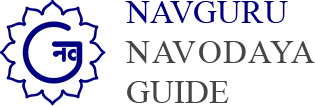In order to excel in the JNVST exam for Class 6, it is important for candidates to have a strong grasp of the topics and practice the JNVST Syllabus Class 6. This blog post aims to discuss the Navodaya Vidyalaya syllabus for the JNVST exam, specifically for Class 6. The JNVST exam is held every year to select eligible students for admission to Navodaya Vidyalayas across the country.
JNVST Syllabus Class 6: Exam Pattern
The JNVST Class 6 exam pattern consists of three sections, which are the Mental Ability Test (MAT), Arithmetic Test, and Language Test. The exam is conducted over a duration of two hours, from 11:30 a.m. to 01:30 p.m., and all the questions are objective-type. The exam comprises 80 questions in total, with a total score of 100.
Mental Ability Test (MAT)
The Mental Ability Test (MAT) is designed to assess the logical and analytical skills of the candidate. It consists of 40 questions, with a total score of 50 marks, and the time allotted for this section is 60 minutes. The MAT is a non-verbal test where figures and diagrams are used to answer the questions. The section is divided into 10 subsections, with four questions each, and covers a range of topics such as:
- Odd-man-out
- Figure matching
- Pattern completion
- Figure series completion
- Analogy
- Geometrical figure completion
- Mirror imaging
- Punched hole pattern
- Space visualisation
- Embedded figure
Arithmetic Test
The Arithmetic Test evaluates the mathematical ability of candidates through a section consisting of 20 questions for 25 marks, with a 30-minute time limit. The focus of this test is to measure the understanding and application of concepts and skills related to topics such as:
1. Number and numeric system
2. Fundamental operations on the whole number
3. Fractional numbers and four fundamental operations
4. Factors and multiples, including properties
5. LCM and HCF
6. Decimals and fundamental operations
7. Conversion of decimals to fractions and vice-versa
8. Measurement of length, mass, time, capacity, money etc
9. Distance, time and speed
10. Approximation of expressions
11. Simplification of Numerical Expressions
12. Percentage and its applications
13. Profit and loss
14. Simple interest.
15. Perimeter, area and volume.
Language Test
Similarly, the Language Test aims to assess candidates’ language proficiency, specifically their reading comprehension. The test includes four passages, with five questions after each passage, and has a 30-minute time limit. The objective is to evaluate candidates’ ability to read and understand written material, as well as their ability to answer questions based on the content. Both tests have 20 questions worth 25 marks each.
Important Instructions for the JNVST Exam
- The JNVST exam is administered using a single test booklet containing all three sections.
- Candidates must carefully read the instructions provided on the exam booklet’s front page and for each section before attempting the questions.
- If the test booklet in the correct language is not provided, candidates should update their test booklet before the exam begins.
- Candidates must obtain the test booklet of their choosing, as specified on the application, on their own initiative.
- The total exam duration is two hours without any breaks, and a 40-minute extension will be granted to “Divyang students.”
- Qualifying marks must be obtained in all three sections, and candidates are advised not to spend more time than recommended on each section.
How to fill Answers in JNVST
- Candidates appearing for the JNVST must fill out a separate OMR answer sheet, indicating their responses in the appropriate spot using only a Blue/Black Ball Point Pen.
- The use of pencils is strictly prohibited during the exam.
- Only one of the four possible answers to each question is correct, and the candidate must choose the appropriate response and darken the matching circle.
- The darkened circle cannot be altered, and the use of white/correction fluid or erasing is not allowed.
- For each correct answer, the candidates will be awarded 1.25 marks, and no negative marking will be done.
Conclusion
In conclusion, the JNVST Navodaya Vidyalaya Syllabus for Class 6 Exam Pattern is intended to assess the candidate’s mental ability, mathematical ability, and language proficiency. Proper preparation and time management are essential to securing admission to Navodaya Vidyalayas, which provide high-quality education and opportunities for holistic development.



